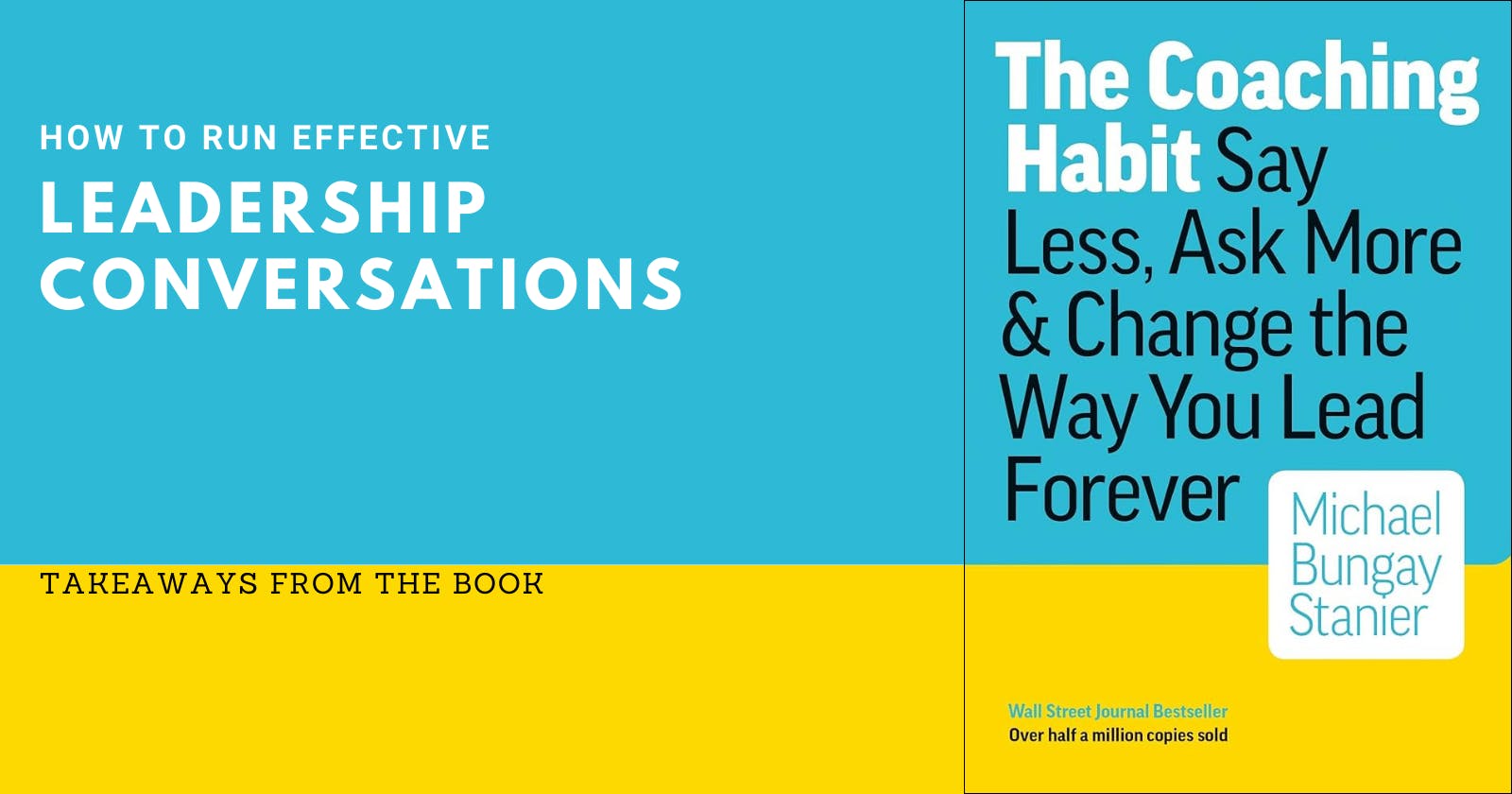As a leader you probably understands the benefits of holding regular 1:1 meetings with direct reports — create bonds, trust, align goals, provide regular feedback, and support individual development are just a few. Yet, how often do you find yourself wondering about your approach during these sessions and thinking if you are being really helpful to your team?
The Coaching Habit book is a Wall Street Journal best seller where Michael Bungay Stanier provides a practical guide to both new and experienced managers to build new habits and using them to construct effective leadership conversations.
You need to build new habits
Provide guidance is not the same as giving advice, and change this behavior to start asking more questions, instead of providing answers, can be surprisingly difficult. You may feel you are loosing control of the conversation, and indeed you are.
Also, the more you help people, more people will trust you on solving the problems and break these vicious circles will help you to work less hard and have more meaningful impact.
Creating overdependence on you
You feel consistently overwhelmed
Become disconnected from the important work
Start with three questions
The simplest way to start is just cut the small talk and ask the first question "What is in your mind?", this kickstart question will help you to always put the other person on the driver seat of the conversation.
Stay curious, and ask one question at a time. Use the follow-up "and what else?" (AWE) to get deeper on the conversation, because most of the time you will not get a genuine answer on the first try. And avoid rhetorical questions like "Have you thought of" or "did you tried this", because they are just advices in form of questions.
Use the "What is the real challenge here for you?" question to make the conversation personal, and understand the underlying problem the person in front of you wants to solve, and make sure to not focus on the first problem you get.
Once you make the right questions, listen carefully, and learn to be comfortable with the silence. Silence is usually a synonym of success.
Sometimes you can also use the neuroscience of engagement to keep the conversation rolling, not just making the questions but also answering it by yourself
Decide where to focus the conversation
You should focus most of your conversations on development, not on performance. Look for areas where each employee can grow and guide the team to be more effective at what they do as a group.
The 3P model is a framework to help you decide what to focus in a coaching conversation:
Project: This is where most of the coaching for performance and technical change tends to occur
Person: Is about how to improve relationships between people and teams.
Patterns: Behaviors and ways of working you would like to change. This area is where most coaching for development conversations would emerge.
Identify people needs and wants
What do you want? This is the foundation question . People are driven by 09 major wants and needs: Affection, creation, recreation, freedom, identity, understanding, participation, protection and subsistence. Use this question to figure out which one is motivating the employee
How can I help you (to get there)? This is the lazy question. Because sometimes the employee has nothing else to offer but complains about a situation. Setup a positive coaching moment.
Reflect about the learnings
People don't learn when they listen, they usually learn when they have a chance to recall and reflect about what happened and create new neural pathways.
What was most useful for you?
This is the learning question, it will make the person reflect on the one or two takeaways and gives you feedback about the conversation, what to do more next time and reassure (if) you are being useful.
Your job as a leader is to create the space for these learning moments.
Conclusion
You can use every channel to ask questions and coach your team. Learn to find your own questions and most than all build an habit of curiosity 🙋♂️❤️ .

